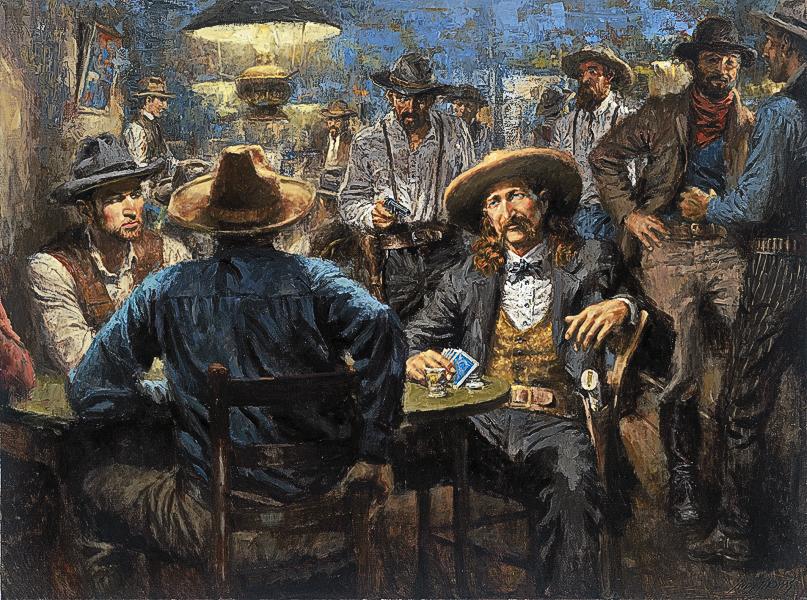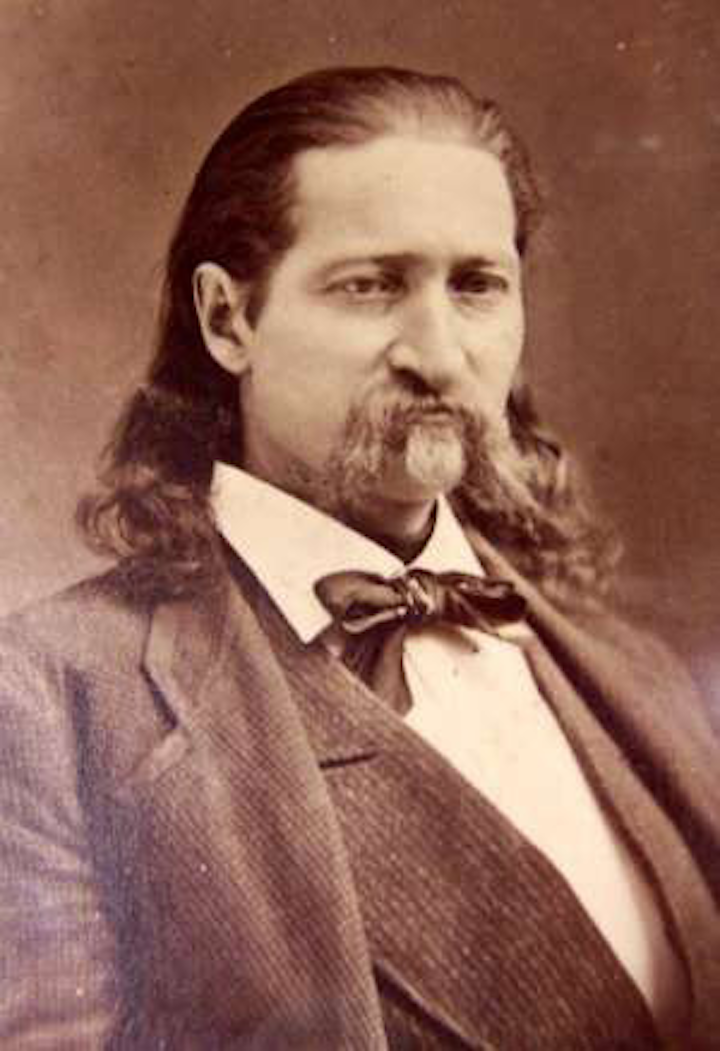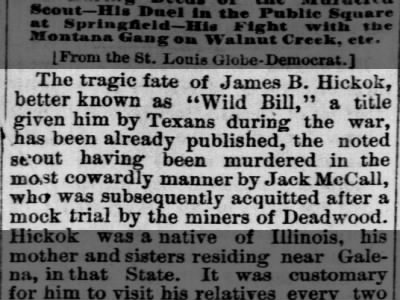In 1872, legendary plainsman Wild Bill Hickok joined several cowboys and Indians in a “Grand Buffalo Hunt” staged at Niagara Falls. Buffalo Bill Cody himself had already been in show business for a decade, staging plays known as “border dramas,” which actually were small-scale Wild West shows featuring genuine frontier characters, real. He took the boy to safety in Fort Worth, and the boy later took the name Texas Jack Jr. In homage, going on to run the Texas Jack's Wild West Show and Circus in 1903 in South Africa. 4 In 1869, Texas Jack moved to Fort Hays, Kansas, where he met California Joe Milner and Wild Bill Hickok, the latter being sheriff of Ellis County at the time. Hickok became a scout for the Free-State Army, a sharpshooter and eventually, 'Wild Bill' Hickok, legendary lawman of the Old West. In 1865, shortly before Na-Nex-Se died, the Kansas and Neosho Valley Railroad was organized to take advantage of favorable new land laws. A gunfight between Hickok and David Tutt was likely the original source of the iconic one-on-one quickdraw concept. In 1876, Wild Bill was shot in the back during a game of poker. At the moment of his murder, he was holding two pairs of aces and eights, which later became known as the Dead Man’s Hand. Wild Bill Hickok – Old West Icon.
- How Old Was Wild Bill Hickok When He Died Last Night
- How Old Was Wild Bill Hickok When He Died On This Day
- How Old Was Wild Bill Hickok


How Old Was Wild Bill Hickok When He Died Last Night

How Old Was Wild Bill Hickok When He Died On This Day


How Old Was Wild Bill Hickok
Lenexa (pronounced /lɨnɛksə/) is a city in the central part of Johnson County, located in northeast Kansas, in the central United States of America. As of the 2010 census, the city population was 48,190. As a satellite city of Kansas City, Kansas, Lenexa is included in the Kansas City Metropolitan Area. It is bordered by the cities of Shawnee to the north, Overland Park to the east, De Soto to the west and Olathe to the south. In July 2009, Lenexa was named the #26 best small town to live in the United States by Money magazine.
Twelve years before the town of Lenexa was platted in 1869, a young man named James Butler Hickok staked a claim on 160 acres (0.65 km2) at what is now the corner of 83rd and Clare Road. At about the same time, a census of the Shawnee Indians living in the area was being taken. One of the residents was listed as 'Na-Nex-Se Blackhoof,' the widow of Chief Blackhoof, who was the second signer of the 1854 treaty that ceded 1.6 million acres (6,500 km²) of the Kansas Shawnee Indian reservation to the U.S.Government. A few miles east in Westport, Missouri, was the start of the Old Santa Fe Trail. It meandered through the southeast part of Lenexa on its way to Santa Fe, New Mexico. Life in eastern Kansas was about to change dramatically.
Later, Mr. Hickok became a scout for the Free-State Army, a sharpshooter and eventually, 'Wild Bill' Hickok, legendary lawman of the Old West. In 1865, shortly before Na-Nex-Se died, the Kansas and Neosho Valley Railroad was organized to take advantage of favorable new land laws. It later changed its name to Missouri River, Ft. Scott and Gulf Railroad and in 1869 purchased a right-of-way from C.A. Bradshaw with the stipulation that the railroad build a depot on the property. Mr. Bradshaw then sold 10.5 acres (42,000 m2) to Octave Chanute, a railroad civil engineer, who platted a town in 1869. Legend states that the town was first proposed to be named 'Bradshaw', but he modestly refused and the name 'Lenexa,' a derivation of the name Na-Nex-Se, was adopted.